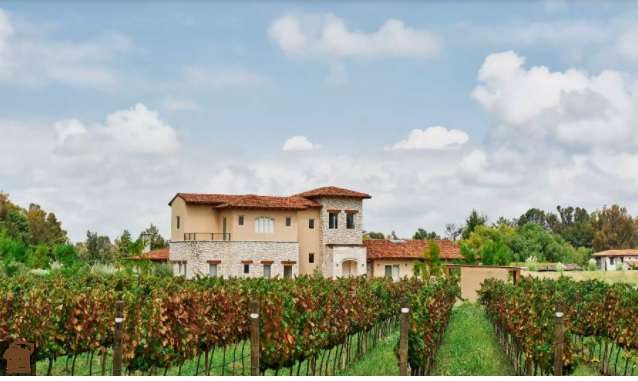It was August, the peak of the harvest season, and Taylor Goodall was driving me to Cava Garambullo (by appointment only). The small winery is 15 minutes north of San Miguel de Allende, where Goodall owns the five-bedroom Hotel Amparo (doubles from $180). Goodall’s friends, Branko Pjanic and Natalia López Mota, the husband-and-wife team behind Cava Garambullo, had asked him to their vineyard to help crush grapes. Ahead of us, a roadrunner hurried across Route 51, disappearing into a landscape of pepper trees and cacti. Given that we were in wine country, I expected to see grapevines left and right, but there were none in sight.
“The region is less than twenty years old in the wine world, and some of the producers are really young,” Goodall explained, easing my confusion. “It’s kind of undiscovered right now.” In town, this shows. Local wines are not common on menus, and most people order beer or tequila.
But now, as the area revives its wine heritage, that’s beginning to change. Guanajuato—a state in the central highlands of Mexico that’s slightly smaller than Maryland—isn’t recognized for its wine in the same way as Baja California‘s long-established Valle de Guadalupe. Visitors to San Miguel de Allende and the state’s capital city, Guanajuato, are more likely to focus on art, architecture, and textile design.

From left: The Viñedo San Miguel shop; bottles on display in the winery’s tasting room. | CREDIT: DAVID ALVARADO
Yet viticulture is embedded in the soil, dating back to the 1520s, when the Spanish colonial government ordered vines to be planted across Mexico. Winemaking was later outlawed for anyone outside the clergy, but after the Mexican War of Independence in 1821, households began cultivating vineyards again.
Over the past two decades, more than 30 wineries have opened in the region—ranging from traditional to experimental—and today they form stopping points on Guanajuato’s Ruta del Vino, which follows four paths across the state. This motley group of established and new vintners is rediscovering the rhythm of the land. Torrential rains fall during the harvest season, and temperatures swing fiercely from day to night, often by as much as 30 degrees. This type of stress defines the grapes’ skin, sugar, and balance of acidity, resulting in wines that are charismatic and intriguing and that go down with great ease.
CLICK HERE FOR FULL ARTICLE ON TRAVEL +LEISURE
San Miguel Times
Newsroom

